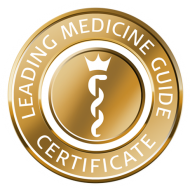Was unsere Patienten sagen
Babypost im Oktober
Sehr geehrtes Wunschbaby-Team,sehr geehrter Herr DDr. Michael Feichtinger,anbei senden wir Ihnen mit Freude das schönste Bild über die erfolgreiche Behandlung.Unsere Tochter hat am 22.8. das Licht der Welt erblickt.Es ist nicht in Worte zu fassen wie glücklich und dankbar wir sind!Vielen Dank für alles und bis bald!
Kinderwunsch & Samenspende
Vor jeder Samenspende wird eine ausführliche Anamnese durchgeführt, darauf folgen Tests auf genetische Probleme sowie Geschlechtskrankheiten und ein Spermiogramm, um die Qualität der gespendeten Samen sicherzustellen. Wie es danach weiter geht, was alles zu beachten ist, wie oft gespendet werden darf und was mit der Samenspende passiert, erfahren Sie in dieser Podcast Episode mit mit Priv. Doz. DDr. Michael Feichtinger und Mag. Julia Ecker.Wir bedanken uns ...
... bei Fr. Dr. Fischlmeier und Team für die langjährige Betreuung! Unser zweiter Sohn F. wurde am 21.12. um 11:12 Uhr geboren.Liebes Team
Wir möchten Ihnen allen hiermit die freudige Nachricht senden, dass unser Kinderwunsch Dank Ihnen in Erfüllung gegangen ist. Noch einmal vielen lieben Dank. Ihre Familie B.Liebe Frau Dr. Fischelmaier!
Nochmals ein herzliches „Dankeschön“ für die gute Betreuung an Sie und das gesamte Wunschbaby-Team! S.A.Lesen Sie mehr

IVF - In Vitro Fertilization (assisted reproduction)
What do IVF and ICSI mean?
In the IVF method, around 100,000 sperm are introduced to each egg cell. The best, most vital sperm naturally makes its own way into the oocyte.
Indications:
IVF is the preferred conventional method for assisted reproduction in patients with endometriosis, PCOS, or obstructed fallopian tubes AND the male partner has a normal sperm analysis.
Success rates
The chance of successfully becoming pregnant with the assistance of IVF is about 30-40% per cycle, dependent on the age of the individual partners, hormonal balances, the presence of underlying diseases (diabetes, high blood pressure, etc.) and lifestyle factors (being overweight, stress, nicotine and excessive alcohol consumption, etc.).
How IVF works
The seven steps of IVF-treatment:
- Hormonal stimulation of the ovaries
- Follicular puncture
- Collection of semen
- Fertilization through IVF
- Embryo transfer
- Assisted laser hatching
- Nidation phase
1. Hormonal stimulation of the ovaries
Treatment with IVF (in-vitro fertilization) or ICSI (intracytoplasmic sperm injection) nearly always (with very few exceptions) takes place after hormonal stimulation of the ovaries. The goal of hormonal therapy is to increase the number of maturing follicles in both ovaries to obtain several fertile eggs.
A preparatory phase (“down-regulation”) is intended to prepare the body for the actual stimulation by suppressing the body's own hormone production or release. This so-called "down-regulation" can take place either by applying daily injections under the skin (subcutaneous) or through oral intake of certain medications. The advantage of the preparatory phase is that controlling the stimulation phase becomes far easier.
FSH (follicle-stimulating hormone) and LH (luteinizing hormone) are used in their pure hormonal form or combined for the subsequent stimulation of the ovaries. Throughout the hormonal treatment, a specific dose (dependent on weight, age, etc.) is administered daily at the same time every day through subcutaneous injections.
The use of these medications and how they are applied will be explained in detail when starting treatment. The injection of these medications will be demonstrated so that patients and/or their partners can inject themselves daily, so that daily visits to the doctor are not necessary.
The number of follicles, the course of their growth, and the development of the uterine lining will be closely observed per ultrasound. Once the follicles reach a certain size, ovulation will be triggered using the hormone hCG (human chorionic gonadotropin). This technique helps determine the optimal time for egg cell retrieval—namely, shortly before ovulation.
2. Follicular puncture
The egg cells are removed through transvaginal extraction (through the vagina) under ultrasound guidance 36 hours after the application of the “ovulation stimulating shot”. A needle is first used to focus the follicles under ultrasound guidance, and then to puncture and collect the follicular fluid containing the egg cells (oocytes). Afterward, the egg cells are separated from the follicular fluid under microscopic view and transferred to a special culture medium and placed in an incubator at 37°C.
On average, the follicular puncture only lasts 5-15 minutes, depending on the number of follicles. In order to make the procedure more comfortable, our patients receive a combination of sleep and pain medication. The follicular puncture is performed on an outpatient basis, and a post-procedural 1-2-hour observational period in our relaxation rooms is necessary afterward.
3. The semen collection
The semen is obtained on the day of the follicular puncture through masturbation after 2-3 days of abstinence (no ejaculation). This is sometimes difficult, especially when “ordered” to do so, or due to stress/time pressure. Therefore, in seldom circumstances, it is also possible to bring the semen sample from home. It should be noted, however, that the period between semen collection and delivery of the sample to the institute cannot exceed two hours.
4. Fertilization: conventional IVF method
The fertilization of the extracted egg cells happens on the same day as they were retrieved. The sperm and the egg cells are brought together in a small bowl using a special preparation technique, which allows the fertilization process to take place in a "natural" way. The next day, a microscopic examination is performed to see how many of the egg cells show signs of fertilization (for example, if two pronuclei and two polar bodies are formed).

5. The embryo transfer
2-5 days after fertilization, the embryo is brought into the uterus using a thin, flexible plastic tube (catheter) under ultrasound guidance. Which day the embryo transfer will take place on is dependent on the number of fertilized eggs. If 1-4 egg cells are successfully fertilized, then they are usually transferred to the uterus 2-3 days after the follicular puncture. During the 2-3 days, the embryos are assessed daily regarding their development (cell division) and other specific requirements, such as cell division rates and consistency of cell division. The embryos with the best quality are selected for transfer.
If there are five or more embryos, then the transfer is performed five days after fertilization, which is referred to as a blastocyst transfer. A blastocyst is the furthest stage of development that can take place outside of the human body. If more than five embryos of top-quality are available for transfer, then these can be frozen.
The transfer of the embryos into the uterus only lasts a few minutes and is usually painless. We advise our patients to relax in our relaxation rooms for 20-30 minutes afterward.
6. Assisted Laser Hatching (ALH)
The egg cell and the embryo are surrounded by a solid shell, the so-called zona pellucida. When the embryo reaches the blastocyst stage, it must hatch out of this shell in order to implant itself in the uterus. Sometimes, however, this sheath is "hardened" or thicker than average, which makes implantation more difficult or even impossible. When this happens, the incision of the zona pellucida using a laser makes it easier/possible for the growing embryo to "hatch" and thus implant itself into the uterine lining.
7. Nidation phase (Implantation phase, Luteal Phase)
With the follicular puncture begins the second half of the menstrual cycle, the so-called luteal phase. Throughout this phase, the hormones produced by the corpus luteum are supported using medication, to ensure that the endometrium is optimally prepared for the implantation of the embryo. The medication used in the luteal phase can be applied as intramuscular depot injections, taken orally, or through vaginal suppositories.
The earliest that a pregnancy can be determined is two weeks after fertilization of the oocytes through the detection of the pregnancy hormone hCG in the blood or urine. If the pregnancy test results are positive, support of the luteal phase is continued until the 12th week of pregnancy.
- Overview
- IVF
- IVF in 10 steps
- Cause of miscarriages
- Assisted-Hatching
- Chipsi
- Application of Seminal Plasma
- Egg cell donation
- Genetics
- Testicular puncture
- Insemination
- ICSI
- Fertility treatment in same-sex couples
- The dream to have children despite cancer
- Complementary Medicine
- Cryopreservation
- Male Infertility
- PICSI
- Psychotherapeutic support
- Sperm and egg cell donations
- Social Freezing



































